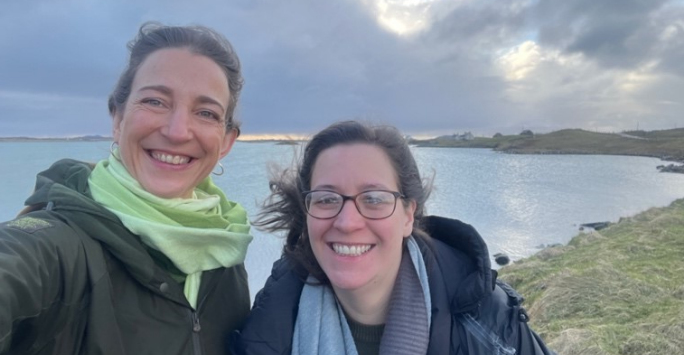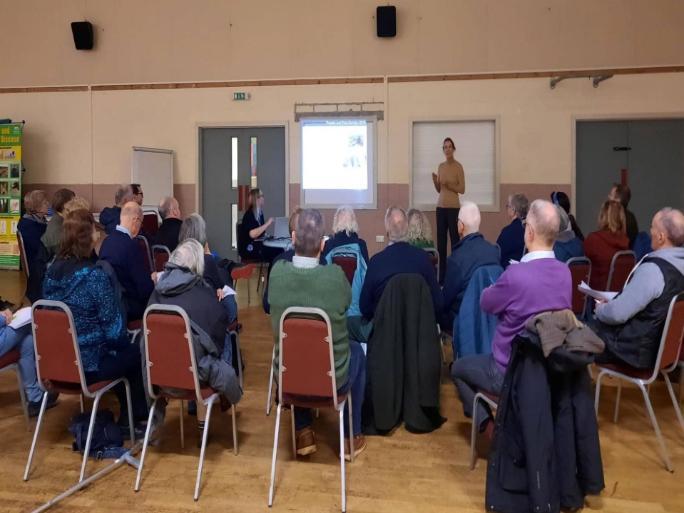
Dr Caroline Millins is a Senior Lectuer in the Department of Livestock and One Health. Here she discusses her research into Lyme disease in the Outer Hebrides.
Lyme disease is an infection contracted from a bite from an infected tick, with cases on Uist in the Outer Hebrides forty times the UK average. My research has shown that Lyme disease has the potential to emerge in open treeless habitats found across the Outer Hebrides – a far wider range of habitats than previously thought. Since 2017 I have been working closely with affected communities, NHS-Western Isles, NatureScot and the University of Glasgow to understand why Lyme disease has emerged so dramatically here.
Our research
Our research has shown that the main wildlife hosts infecting ticks are voles and rats, and that islands and habitats with higher deer densities were associated with higher densities of ticks. Surveys of over 500 people from the Outer Hebrides found that over 70% of tick bites happen in gardens or near homes, and people were being bitten frequently with ticks brought in by pets and on clothing.
The majority of people reported that tick numbers are increasing. Residents in areas of Lyme disease emergence associated higher numbers of ticks with more deer visiting crofts and gardens. In 2022, a helicopter deer count of South Uist found that deer numbers are far higher than previously thought. For several years, deer have been attracted from poorer upland moorland areas to resources around crofts, gardens, silage bales and richer grazing. This is leading to ticks being introduced into areas people and livestock use more frequently, resulting in higher human tick bite exposure and challenges to control ticks on pets and livestock.
Engaging the community
Before the pandemic I had regularly visited and discussed research findings with the community and stakeholders. I discovered people were being bitten by ticks frequently in their gardens and we were able to include gardens in the ecological sampling for ticks as a result.
In February 2023, I visited with support from the Health and Life Sciences Wellcome Trust ISSF award to share our latest research on effects of deer and rodents on Lyme disease risk, and begin conversations with landowners, crofters and stakeholders around solutions for management.
Our visit was very timely with ticks and Lyme disease presenting a real and pressing issue for the community. An Emergency General Meeting had been called for March with the South Uist Stòras Uibhist estate with a proposed motion to remove the red deer population of around 1,200 due to rising concerns about ticks, damage to crofts and road traffic accidents.
Isabell MacInnes from NHS-Western Isles (NHS-WI) first highlighted the emergence of Lyme disease on Uist and has spearheaded research collaborations and public awareness campaigns to reduce cases on the islands.
Alongside Isabell, Johanne Ferguson (NatureScot) and social scientist Jennifer August (UK Centre for Ecology and Hydrology - UKCEH), we held focus group workshops and interviews to capture knowledge and perceptions of ticks, deer and feasible interventions. These were informed by research in the NERC funded project ‘Ticksolve’ which I co-lead.
BBC Alba interviewed Isabell and I for a news feature highlighting the community tick and Lyme disease events we had planned. Over 100 people attended, which resulted in really inciteful discussions.
Isabell, myself and PhD student Jonathan Yardley gave research presentations at a community meeting, which received coverage in the community newspaper Am Paipear. Jennifer and I also held drop in sessions with Isabell’s team to share research updates.

Making an impact
There have been several really positive results from our visit. I was able to connect Isabell and local GP practices with researchers in the Health Protection Research Unit in Emerging and Zoonotic Diseases (HPRU-EZI) at the University of Liverpool and link to a primary care cohort study of Lyme disease patients.
Ahead of the Emergency General Meeting, we shared with the community a report summarising our five years of eco-epidemiological research findings to date to assist decision making. The report findings were referenced several times during the meeting. The community voted against the motion to remove all of the deer and the estate has committed to reducing deer numbers, and particularly deer which roam close to crofts and gardens.
Next steps
Results from the focus group meetings and over 150 questionnaire surveys received from across the Western Isles will be analysed and presented as a report and will be developed into a publication assessing knowledge gaps, barriers and suitability of interventions to manage tick-borne diseases in this context.
I have received further funding from the Wellcome ISSF fund to support this research and to purchase tick removers for NHS-WI tick awareness and prevention campaigns. The University of Liverpool Research and Impact Fund will assist me to visit Uist in July 2023 to interview crofters and understand past and present land management and current threats from livestock tick-borne diseases and disease burden with the aim of optimising management.